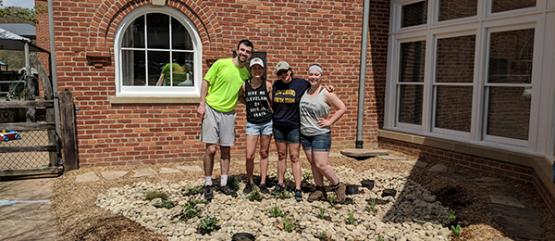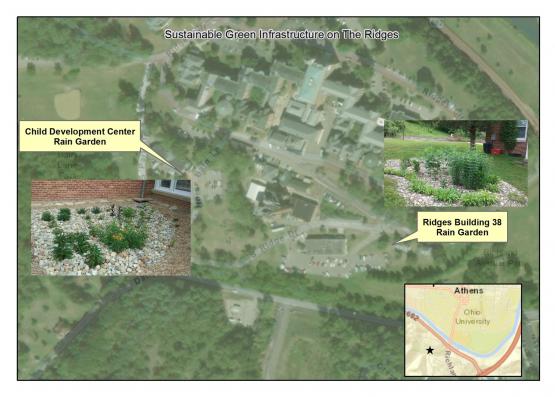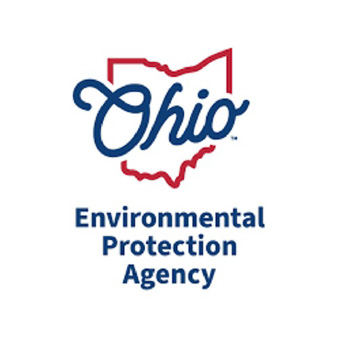Rain Gardens
Every time it rains, excess water travels through the landscape as run-off, picking up pollutants such as oil, grease, sediment and excess nutrients which then enter waterways unfiltered, harming aquatic life. However, these effects can be mitigated through rain gardens, vegetated areas that capture rainwater and allow it to soak into the soil – all while providing habitat for native species, reducing the time needed for lawn maintenance and adding beauty to the landscape.

Rain gardens are most effective when gutters and other downspouts are disconnected from storm water sewers and are instead, through downhill slopes or the use of pipes, diverted to rain gardens, which, depressed in the ground, trap that storm water before it has a chance to leave the lawn. Water then infiltrates slowly into the porous soil with the help of deep-rooted plants, which, in turn, help to filter pollutants and other substances, allowing cleaner water to enter the groundwater table. By using native plants in rain gardens, the garden simultaneously functions to attract pollinators like bees and butterflies, with the added benefits that these plants are more tolerant of drought and flood conditions and require less maintenance, watering, fertilizer and pesticide applications, adapted as they are to the climate and soil of the region.

The Energy and Environment team at Ohio University’s Voinovich School of Leadership and Public Service has constructed two rain gardens on the grounds of The Ridges to improve the environment and motivate environmental stewardship in the Athens and Ohio University communities. Rain gardens are easy for just about anyone to construct and install – just follow these ten simple steps:
- Establish a budget. Consider whether your installation will involve partners, such as a property owner and/or funding organizations, or contractors, such as a construction crew.
- Determine where you will place your rain garden. Consider the location of downspouts and the natural slope of the landscape, ensuring that there are no obstructions to water flow, and check potential sites for any underground utilities that may prevent the installation of a rain garden in that area.
- Because different soils absorb water differently, examine the soil to determine what size your rain garden will need to be. By digging a soil sample, you can visually identify the type of soil (sand, silt, loam or clay) and then easily look up the drainage rate of that soil type. Alternatively, the Central Ohio Rain Garden Initiative recommends a 24-hour soil infiltration test in which a 12-inch soil pit is dug and filled with water to determine how well the soil absorbs water. Visit their website, listed below, for more information about this simple method and consult this rain garden size calculator to help ensure that your rain garden is sized appropriately for the intended drainage area.
- Solicit friends or volunteers to help construct your rain garden.
- Outline the desired shape of the garden using flags, marking spray or other non-toxic materials.
- Remove the top layer of sod and dig to the calculated depth.
- Till the top layer of remaining soil after digging to improve soil drainage, and mix about two inches of compost into this soil layer to improve plant growth.
- Begin planting! Consult this list of recommended plants created by the Central Ohio Rain Garden Initiative.
- Add mulch, rock framing, educational signage or other aesthetics to your liking.
- Disconnect your downspouts from the storm drain system and divert those flows to the rain garden, using natural slops or piping. Some systems also include overflow pipes, but properly sized rain gardens generally do not need this consideration.
Visit the Central Ohio Rain Garden Initiative website and the Ohio River Foundation website for more information.
This webpage was financed in part through a grant to the Appalachian Ohio Clean Watershed Initiative from the State of Ohio Environmental Protection Agency and the United States Environmental Protection Agency, under the provisions of Section 319(h) of the Clean Water Act.

